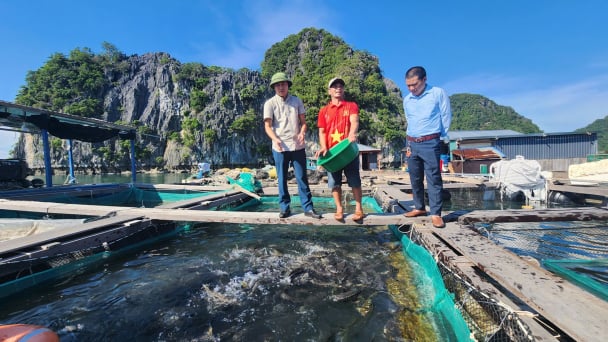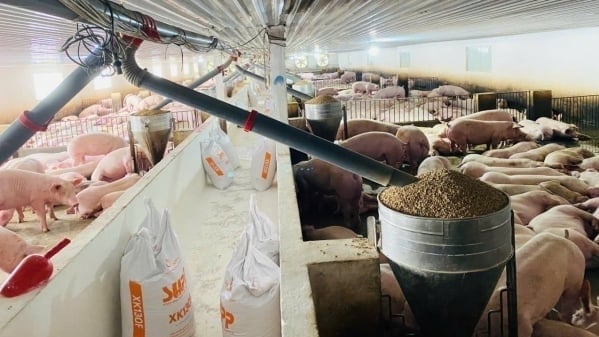September 5, 2025 | 19:40 GMT +7
September 5, 2025 | 19:40 GMT +7
Hotline: 0913.378.918
September 5, 2025 | 19:40 GMT +7
Hotline: 0913.378.918

Vietnam’s high-quality three-line hybrid rice variety HYT325 in Thanh Son - Phu Tho, 2020 spring crop.
Hybrid rice technology has existed and developed for nearly half a century. The world knew about China’s success in solving severe hunger prolonged for many years thanks to the research works of Professor and Academician Yuan Long Ping, known as the "father" of China's hybrid rice, which were published in 1964, resulting in China’s strong development of hybrid rice with the support of the Government.
By the mid 90s, the country's hybrid rice area had reached over 15 million hectares, accounting for 50% of the rice growing area. The yield of hybrid rice in China at that time was 6.44 tons/ha, 2.02 tons/ha higher than that of inbred rice, helping China's rice production increased to over 20 million tons/year, basically helping this country become self-sufficient in food.

Hybrid rice variety LP1601 in Nga Son - Thanh Hoa, 2021 spring crop.
Also in the early 90s of the last century, through the exchanges between the two countries’ people, farmers in the districts of Ba Che, Mong Cai, Dam Ha, Binh Lieu... of Quang Ninh province grew hybrid rice on terraced fields and in alternating valleys, and the results were beyond expectation. Without delay, Minister of Agriculture and Food Industry Nguyen Cong Tan had directed towards the need to quickly approach hybrid rice technology, find new ways to break the record of rice yield and ensure a firm balance of food demand for the northern provinces.
The Ministry has established a national committee of hybrid rice programs, with a leader in the Ministry as the head. In order to conduct scientific research on hybrid rice systematically, the Ministry also established the Center for Research and Development of Hybrid Rice, located in Vietnam Agricultural Science and Technology Institute.
The first generation of hybrid dominant rice imported for wide production in Vietnam is the Bac Uu 64 (also known as Tap Giao 4 - TG4), suitable for crops in the North of Vietnam. During the spring rice crop, there was San Uu 63 (TG1), San Uu Que 99 (TG5)...
During the 1992 crop, the leaders of Thai Binh province, Science and Technology Department, along with the Agriculture Department, had visited Quang Ninh rice field and decided to purchase more than 100 kg of TG4 rice variety. However, the implementation for this variety’s production is extremely difficult as the hybrid seeds are both flat and husk-opened. While introducing, even when the seeds were given for free, supported with fertilizers, many places still rejected with the excuse that they already had prepared enough seeds for the crop. Fortunately, the Vice President of Nguyen Xa - Dong Hung Cooperative had been convinced to accept the job.
After 3 months of close watch, at last, the rice field fully bloomed. It only took 3 to 4 days to complete flowering and pollination, which was better than any other varieties nearby. The rice flower was also big and full of rice. Thanks to appropriate prevention, the crop received almost zero damage.
The TG4 rice harvest of that year’s crop was about 8.3 tons of dry grain/ha, a record. Localities had also begun to have knowledge about hybrid rice, better understood its characteristics, and developed more reasonable farming processes, using fewer seeds compared to normal rice.
Since then, hybrid rice had started to massively enter production. Hybrid rice trading has been considered a "super-profitable" field.

The attraction of hybrid rice
Regarding research on hybrid rice, initially, with supporting projects, parental seeds (lines A and R) were imported for trial production. The production process was almost original, transferred from Chinese experts. In the first production crop of the San Uu 63 combination, in Thai Binh, seeds could not be obtained due to the difference in blooming time: the father line bloomed first, released most of the pollen, then the mother started to bloom later.

F1 hybrid rice seed production site
When the Center for Research and Development of Hybrid Rice was established, gathered technical staffs with deep training in hybrid rice, short-term training in China, Vietnam began in-depth research on sterility, maintenance and recovery lines, along with the development of new combinations. Improvement research focused on varieties that had been expanded in production in Vietnam. Line A was produced on the basis of discovering and selecting line B (remaining sterile) to multiply line A for hybrid seed production when line R could be multiplied normally for production.
Vietnam's technical staffs had quick access to new production technology and process improvement experiments, creating changes compared to the transfer process to simplify, reduce effort and production cost.
Producing hybrid seeds is not as difficult as it was in the early years, and that is the Vietnamese way. Recently, the production of hybrid seeds including three-lines and two-lines is mainly done in the South Central Coast and Central Highlands.
Vietnamese scientists had very quick access to both three-line and two-line hybrid rice researches. After nearly ten years, Vietnam has had hybrid rice varieties selected and produced by Vietnamese scientists. High-quality three-line hybrid rice varieties such as HYT100, HYT 57, LC2, LC3..., especially two-line hybrid rice varieties such as VL20 and TH3-3 have created a great buzz when its license is transferred to enterprises.
We have also actively improved, produced and maintained the infertile mother line Nhi 32A as well as a number of other A lines with quality and advantages, since their ability to combine is not inferior to the A lines imported from China.
Translated by Samuel Pham
/2025/09/05/3330-6-152855_681.jpg)
(VAN) From thatched barns to high-tech farms, Vietnam's livestock industry has undergone a strong transformation over the past 80 years, firmly stepping into the orbit of the circular economy.

(VAN) AI technology for rice seed quality control has already been successfully applied in Thailand and India. In Vietnam, this technology promises innovation, but challenges remain regarding input data.

(VAN) The National Agricultural Extension and Quang Ninh are affirming their important role in developing marine aquaculture towards high technology, sustainability, market orientation.
/2025/09/03/1620-3-160956_644.jpg)
(VAN) Under global requirements, Vietnam is urgently finalizing measurement tools, ensuring data transparency, and completing a legal framework to transform its forest potential into a sustainable resource.

(VAN) Amid the African swine fever ‘storm’, large-scale livestock farms in Lao Cai remain safe thanks to strict biosecurity practices.
/2025/09/02/2302-5-070350_276.jpg)
(VAN) Prof. Dr. Pham Hong Giang, former Deputy Minister of Agriculture and Rural Development, shared his unforgettable memories of constructing large reservoirs and dams in Central Vietnam.
/2025/09/01/2628-2-151932_465.jpg)
(VAN) From the Da Nhim forests with 'wildlife trap-removal knights' to Cuc Phuong National Park, conservation has become a pivotal shift, shaping a modern Vietnamese forestry.